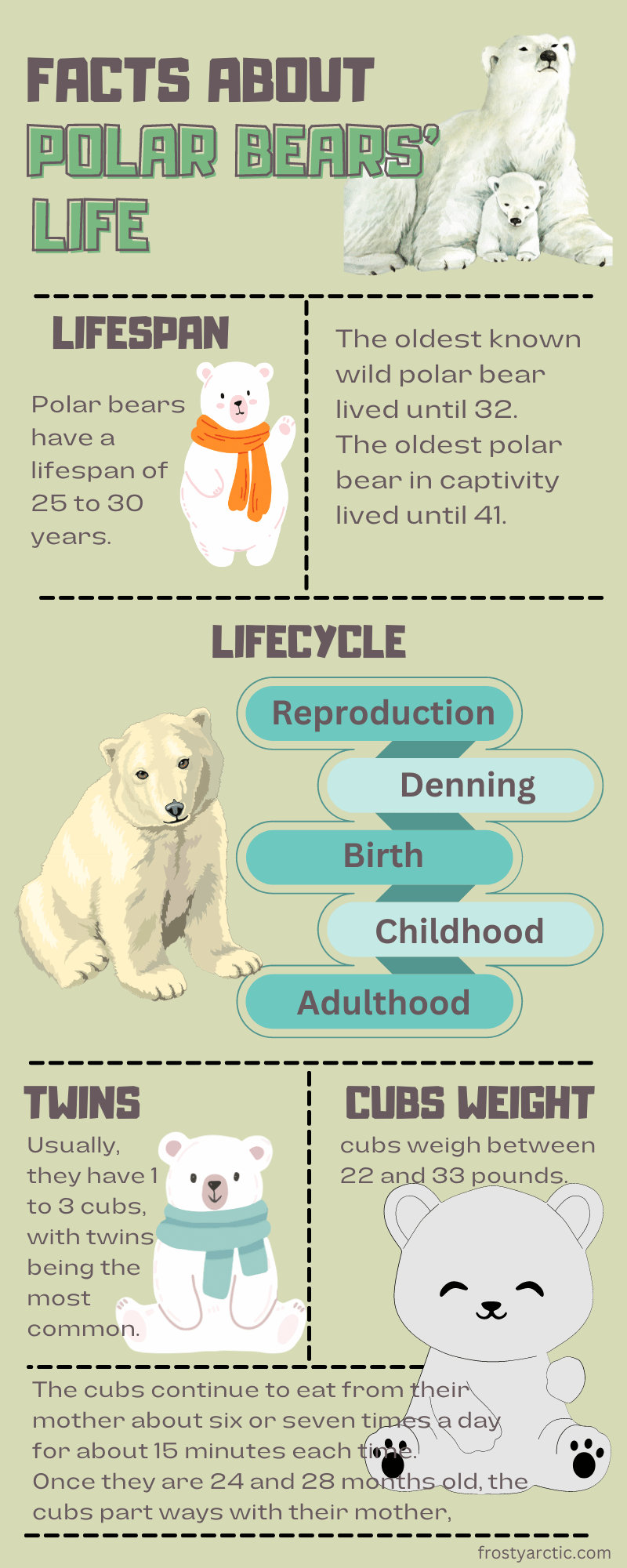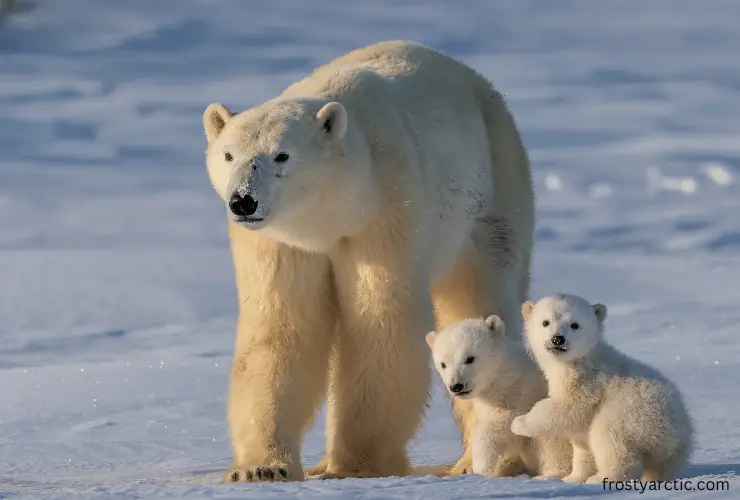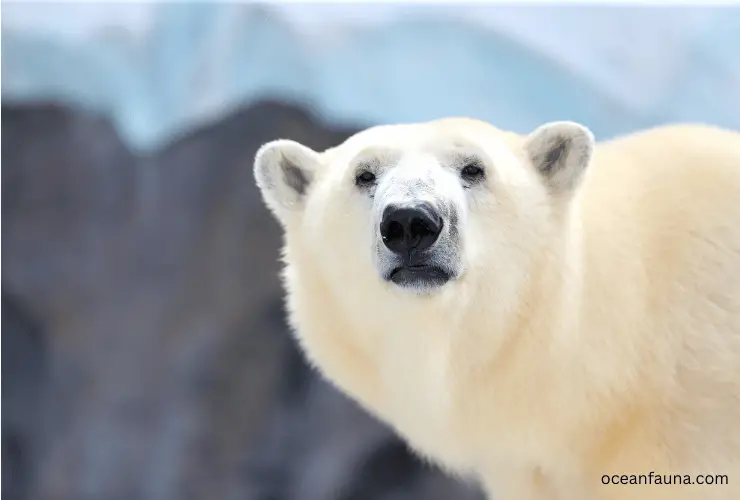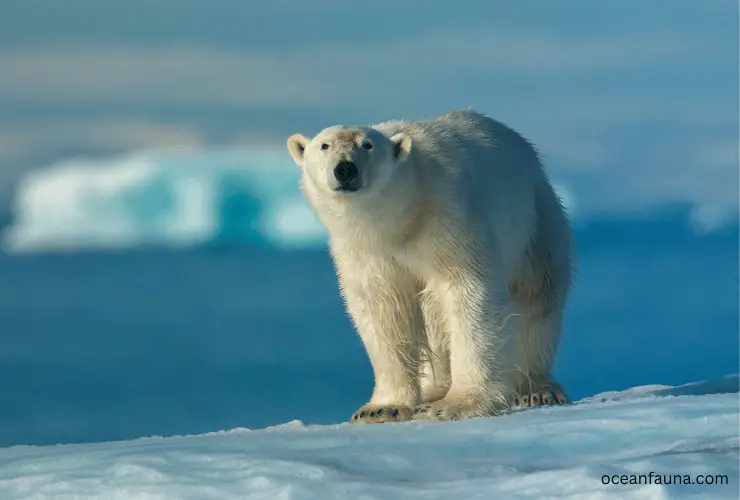Polar bears have a lifespan of 25 to 30 years. The bears may live up to 40 years in captivity, depending on their diet. In the Arctic, the oldest polar bear was 32 years old, but in captivity, the highest recorded age was about 45 years old.
Did you know that as polar bears age, a layer of cementum grows onto their teeth, which scientists use to estimate their age? This article discusses the polar bear’s lifespan, threats to their survival, and lifecycle. So, let’s get started!

How Long Do Polar Bears Live in the Wild?
Polar bears, also known as Ursus Maritimus, have an average lifespan of about 20 to 30 years. However, a tiny percentage of polar bears live more than 15 to 18 years in the wild.
Did you know? With every passing year, polar bears grow a layer of cementum on their teeth. Scientists estimate polar bears’ ages by examining their teeth and counting the layers. A vestigial premolar tooth best indicates a polar bear’s age. ~ Seaworld.org
The longest-living polar bear in the Arctic reached the age of 32 years.
How Long Do Polar Bears Live in Captivity?
Polar bears can live up to 40 years in captivity, depending on their diet and health.
The oldest known wild polar bear lived until 32, and the oldest polar bear in captivity lived until 41.
Debbie is the oldest known polar bear bred in captivity at the Assiniboine Park Zoo in Canada. She lived until she was 41 years old, passing away in 2008 due to multiple organ failure. ~ Nature North
The bear, when healthy, weighed over 300 kg. However, her health eventually deteriorated, resulting in multiple organ failures. With no chance of recovery, Dr. Chris Enright was forced to euthanize Debby, which was considered the most compassionate option.
How Long Do Polar Bear Cubs Live?

The mortality rate of polar bear pups varies across different regions. The survival rate is higher in Alaska and Canada, but in Svalbard, Norway, only about one-third of the cubs survive after being weaned. ~ Polar Guide Book
Scarce food sources, drowning, extremely low temperatures, and falling prey to adult male polar bears threaten polar bear pups.
Adult polar bears may often eat cubs when the food supply is short. On the other hand, female polar bears typically do not hunt other polar bears.
Although polar bears have no natural predators, wolves and other carnivores often prey on cubs under one year old.
As mother polar bears age, the chances of their cubs surviving decrease because of the decline in the mother’s health, making her less capable of protecting her cubs from potential cannibalism.
Polar Bear Life Cycle
Let’s learn more about the lifecycle of polar bears:
Reproduction
Female polar bears reach sexual maturity between the ages of 5 and 6. They leave scented trails on the sea ice to attract male polar bears for mating, usually from late March to mid-July.
During a female’s three-week estrus, a group of fiercely competitive male suitors follows her for mating.
Fertilization occurs, after which the embryo splits and floats freely in the uterus. In September, it implants into the uterine wall, and the development of the fetus begins, a process known as delayed implantation.
Denning
Before denning, female polar bears gain weight by feeding throughout the fall and summer.
In October or November, pregnant bears create their dens by digging a small snow cave in a snowdrift. The cave is just big enough for the bear to turn around comfortably.
Eventually, the snow builds up, closing the den and hiding the bear under the snow. The cave, resembling an igloo, serves as a shelter to protect against the extreme cold of the Arctic.
Birth
Pregnant female bears give birth to their cubs in December or January. Usually, they have 1 to 3 cubs, with twins being the most common.
At birth, the cubs only weigh around 20 ounces each, entirely reliant on their mothers. They are born blind, without teeth, and have soft white fur covering their bodies. The cubs feed on their mother’s milk, which is rich in fat (31%).
The newborn bear and the female bear remain in the den until spring. The female bear does not feed or drink during this time, focusing on nursing her cubs.
Childhood
When the family emerges from its den, daylight increases, and the cubs weigh between 22 and 33 pounds.
After emerging from their den, the cubs stay near the den entrance for about two weeks. The whole family retreats into the cave if there’s even a tiny sign of danger. Once they feel safe, the cubs and their mother venture onto the tundra and sea ice together.
The cubs continue to eat from their mother about six or seven times a day for about 15 minutes each time. The mother then teaches them how to hunt for food.
Even after weighing nearly a hundred pounds in August, the cubs remain with their mothers and spend another one or two winters with them.
Adulthood
Once they are 24 and 28 months old, the cubs part ways with their mother, while some families stay together until the third or fourth winter. The cubs usually stay together but eventually, go their separate ways.
The cubs face a high mortality rate for the first one or two years. However, Hudson Bay is rich in food sources for young bears, increasing their chances of survival.
Female polar bears reach sexual maturity at five years old, while males reach adulthood by the age of 8 or 10 years old. ~ Churchill Polar Bears Org
What Threats Shorten Polar Bear Lifespans?

According to the World Wildlife Fund, polar bear populations are marked as “vulnerable” on the IUCN Red List. Here are some factors that shorten the lifespan of polar bears:
Climate Change
Polar bears cannot survive without sea ice, which they depend on for hunting and storing energy for the summer and autumn when the food supply is limited.
Due to global warming, the sea ice melts earlier in the spring, forming later in the autumn than usual in the Southern range. ~ Endangered.org
So, polar bears are forced to stay on and off food for extended periods, resulting in severe health deterioration for the animals.
The decline in the health of polar bears affects their reproduction, resulting in higher cub mortality. The nursing mothers have lower fat stores because of the meager food supply, negatively impacting nursing cubs.
Pollution
The food that polar bears consume has a high level of pollutants. ~ Arctic WWF
Due to the presence of persistent organic pollutants (POPs), polar bears experience low levels of vitamin A, thyroid hormones, and certain antibodies.
These pollutants negatively affect important biological processes in polar bears, like their ability to reproduce, grow, and defend against diseases.
Because these chemicals are present in their diets, female polar bears have a high concentration of pollutants in their milk, which can poison the cubs.
Oil Exploration
The oil and gas industry are expanding its operations in the Arctic, which increases the risk of routine emissions, spills, or leaks during offshore operations, directly impacting the sea or sea ice.
Polar bears may consume contaminated prey or ingest oil during grooming, which can damage their liver and kidneys.
Direct contact with oil reduces polar bear fur’s insulation, forcing them to use more energy to stay warm. The bears have to increase their food intake to keep warm, which is impossible because of scarce food sources.
Oil spills can destroy polar bear habitats, especially near the denning sites of polar bears, such as Hopen Island in the Barents Sea.
Cannibalism
Due to global warming, polar bears often have an impoverished food supply. As a result, the male polar bears often eat the younger polar bears to survive.
Male polar bears may attack other polar bears when competing for mates or when there’s not enough food available, threatening the survival of the polar bear population. ~ WildlifeTrip Org
FAQs
Are polar bears endangered?
Yes, polar bears are a threatened species and have been classified under the Endangered Species Act (ESA) by the US government.
What happens to a dead polar bear?
Like any other animal, when a polar bear dies, its body decomposes and breaks down. Over time, it becomes part of the ice in the Arctic.
Conclusion
Although polar bears are not endangered, they are considered a “threatened” species. The US Endangered Species Act also lists them as federally threatened, mainly because of climate change.
More than 20,000 polar bears are currently facing multiple threats like habitat loss, contamination, and global warming due to human activities. I hope this article helped clarify your confusion about polar bears’ lifespan.



14 thoughts on “How Long Do Polar Bears Live? [Lifecycle Explained]”